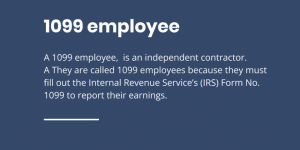Updated November 4, 2025
Understanding Visual Sexual Harassment in the Workplace
When most people think about sexual harassment, they often envision unwanted physical contact or explicit verbal propositions. However, workplace harassment takes many forms, including visual sexual harassment – a pervasive issue that can create hostile work environments and cause significant distress to employees. Understanding what constitutes visual sexual harassment is crucial for both employees and employers under California law and federal regulations.
Visual sexual harassment involves unwelcome exposure to sexually explicit or suggestive imagery, gestures, or conduct that creates an uncomfortable or hostile work environment. This form of harassment doesn’t require physical contact or verbal communication to be considered unlawful and damaging to workplace culture.
Defining Visual Sexual Harassment
Visual sexual harassment encompasses any unwanted, non-consensual exposure to sexually explicit or suggestive content in the workplace. This behavior creates discomfort, embarrassment, or intimidation for the recipient and can significantly impact their ability to perform job duties effectively.
Under California law, visual sexual harassment is recognized as a serious workplace violation that can lead to legal consequences for both perpetrators and employers who fail to address such conduct. The legal framework considers not just the intent behind the behavior but also its impact on the recipient and the overall work environment.
Visual harassment differs from other forms of workplace misconduct because it relies primarily on sight rather than touch or sound. However, it often occurs alongside verbal or physical harassment as part of a pattern of inappropriate conduct. The visual component makes this form of harassment particularly insidious, as it can affect multiple employees simultaneously and create lasting impressions that are difficult to erase.
Employment laws recognize that visual sexual harassment can be just as damaging as other forms of harassment. Courts have consistently upheld that unwanted exposure to sexual imagery or gestures constitutes a legitimate basis for harassment claims when the conduct is sufficiently severe or pervasive.
Common Examples of Visual Sexual Harassment
Visual sexual harassment manifests in numerous ways in modern workplaces. Understanding these examples helps employees identify problematic behaviors and allows employers to implement effective prevention strategies.
One of the most blatant examples involves indecent exposure – when someone deliberately exposes intimate body parts to colleagues. This extreme behavior clearly violates workplace standards and typically results in immediate disciplinary action under California law and company policies.
In today’s digital workplace, electronic forms of visual harassment have become increasingly common. These include:
- Sending unsolicited sexually explicit images via email, text, or messaging platforms
- Displaying pornographic material on computer screens where others can see
- Using sexually suggestive or explicit screensavers or desktop backgrounds
- Sharing inappropriate sexual memes or videos with colleagues
Traditional forms of visual harassment continue to occur as well, including:
- Posting sexually suggestive posters, calendars, or images in shared workspaces
- Drawing sexually explicit or demeaning cartoons of colleagues
- Making lewd gestures or facial expressions directed at coworkers
- Unwelcome staring or leering at someone’s body
Legal Standards and Hostile Work Environment
For visual sexual harassment to be actionable under California law, it typically must be sufficiently severe or pervasive to create what’s legally defined as a "hostile work environment." This standard recognizes that while a single minor incident might be inappropriate, it may not rise to the level of unlawful harassment.
The legal threshold considers several factors:
- Frequency of the conduct (isolated incident vs. recurring pattern)
- Severity of the behavior
- Whether the conduct was physically threatening or humiliating
- The degree to which the behavior unreasonably interferes with an employee’s work performance
California’s Fair Employment and Housing Act provides robust protections against workplace harassment, often exceeding federal standards. Under this framework, employers have an affirmative duty to take reasonable steps to prevent and promptly correct harassing behavior.
Courts evaluate harassment claims using both subjective and objective standards – considering both how the specific victim perceived the conduct and how a reasonable person would view it under similar circumstances. This balanced approach ensures that overly sensitive reactions don’t create liability while still protecting employees from genuinely offensive conduct.
Workplace Policies and Prevention
Effective workplace policies are essential for preventing visual sexual harassment. Employers operating under California law must implement comprehensive anti-harassment policies that specifically address visual forms of harassment alongside other prohibited behaviors.
Well-crafted policies should:
- Clearly define and provide examples of visual sexual harassment
- Establish multiple channels for reporting incidents
- Outline investigation procedures and potential consequences
- Prohibit retaliation against those who report harassment
- Include regular training requirements for all employees
Prevention efforts should focus on creating a respectful workplace culture where inappropriate visual displays are not tolerated. This includes monitoring shared digital spaces and establishing clear guidelines for acceptable workplace imagery and communication.
Regular training sessions help employees understand boundaries and recognize problematic behaviors before they escalate. California law requires employers with five or more employees to provide sexual harassment prevention training every two years, with specific requirements for supervisory and non-supervisory staff.
Reporting Visual Sexual Harassment
If you experience visual sexual harassment in your workplace, documenting the incidents is crucial. Keep detailed records of:
- What occurred (specific descriptions of the visual content or gesture)
- When and where it happened
- Who was involved (both perpetrators and witnesses)
- How you responded
- Any previous related incidents
Most workplaces have established reporting procedures, typically through human resources departments or designated harassment officers. Following these channels creates an official record and triggers the employer’s legal obligation to investigate.
When reporting, be specific about the visual nature of the harassment. Describe exactly what you saw, how it was displayed, and how it affected your ability to work. If possible, preserve evidence such as screenshots of inappropriate digital content or notes about posted materials.
Remember that California law prohibits retaliation against employees who report sexual harassment in good faith. This protection applies even if an investigation ultimately doesn’t substantiate your specific claim, as long as you had a reasonable belief that harassment occurred.
Employer Responsibilities and Liability
Employers have significant legal responsibilities regarding visual sexual harassment under California law. When harassment occurs, employers may be held liable under several circumstances:
- When a supervisor engages in harassment
- When the employer knew or should have known about harassment by non-supervisory employees and failed to take appropriate corrective action
- When the employer failed to implement reasonable preventative measures
Upon receiving a harassment complaint, employers must conduct prompt, thorough, and impartial investigations. This process should include interviewing all relevant parties, reviewing any available evidence, and implementing appropriate remedial measures if harassment is found.
Corrective actions might include:
- Disciplining or terminating the harasser
- Providing additional training to staff
- Revising workplace policies
- Taking steps to prevent future incidents
Employers who fail to fulfill these obligations face potential legal consequences, including significant financial liability for damages suffered by harassed employees.
Legal Remedies for Victims
Victims of visual sexual harassment have several legal avenues available under California law. Before filing a lawsuit, employees typically must exhaust administrative remedies by filing a complaint with the California Civil Rights Department (CRD) or the federal Equal Employment Opportunity Commission (EEOC).
These agencies investigate complaints and may attempt to resolve the situation through mediation or settlement. If they cannot resolve the matter, they may issue a "right to sue" letter allowing the employee to proceed with a lawsuit.
Legal remedies available to successful claimants may include:
- Back pay and front pay for lost wages
- Compensation for emotional distress
- Punitive damages in cases of particularly egregious conduct
- Attorney’s fees and court costs
- Injunctive relief requiring workplace changes
The specific damages available depend on factors including the severity of the harassment, its impact on the victim, and the employer’s response to complaints.
Seeking Legal Assistance
If you’ve experienced visual sexual harassment in the workplace, consulting with an experienced employment attorney can help you understand your rights and options. A knowledgeable lawyer can:
- Evaluate the strength of your potential claim
- Guide you through administrative filing requirements
- Gather and preserve evidence
- Represent you in negotiations or litigation
- Help you understand potential remedies
Many employment attorneys offer free initial consultations and may take cases on a contingency fee basis, meaning you don’t pay unless you recover compensation. This arrangement makes legal representation accessible to employees who might otherwise be unable to afford it.
When selecting an attorney, look for someone with specific experience handling sexual harassment cases under California law, as these cases involve specialized knowledge of both state and federal regulations.
Conclusion
Visual sexual harassment represents a serious workplace issue that can create hostile environments and cause significant harm to employees. California law provides strong protections against such conduct, imposing obligations on employers to prevent harassment and take appropriate action when it occurs.
By understanding what constitutes visual sexual harassment, knowing your rights, and following appropriate reporting procedures, you can help combat this problem and protect yourself and your colleagues. If you’ve experienced harassment, remember that legal remedies exist, and experienced attorneys can help you navigate the process of seeking justice and compensation.
No employee should have to endure visual sexual harassment at work. By recognizing problematic behaviors and taking appropriate action, we can work toward creating safer, more respectful workplaces for everyone.
If you need workplace harassment litigation, please call Setyan Law at (213)-618-3655. Free consultation.






